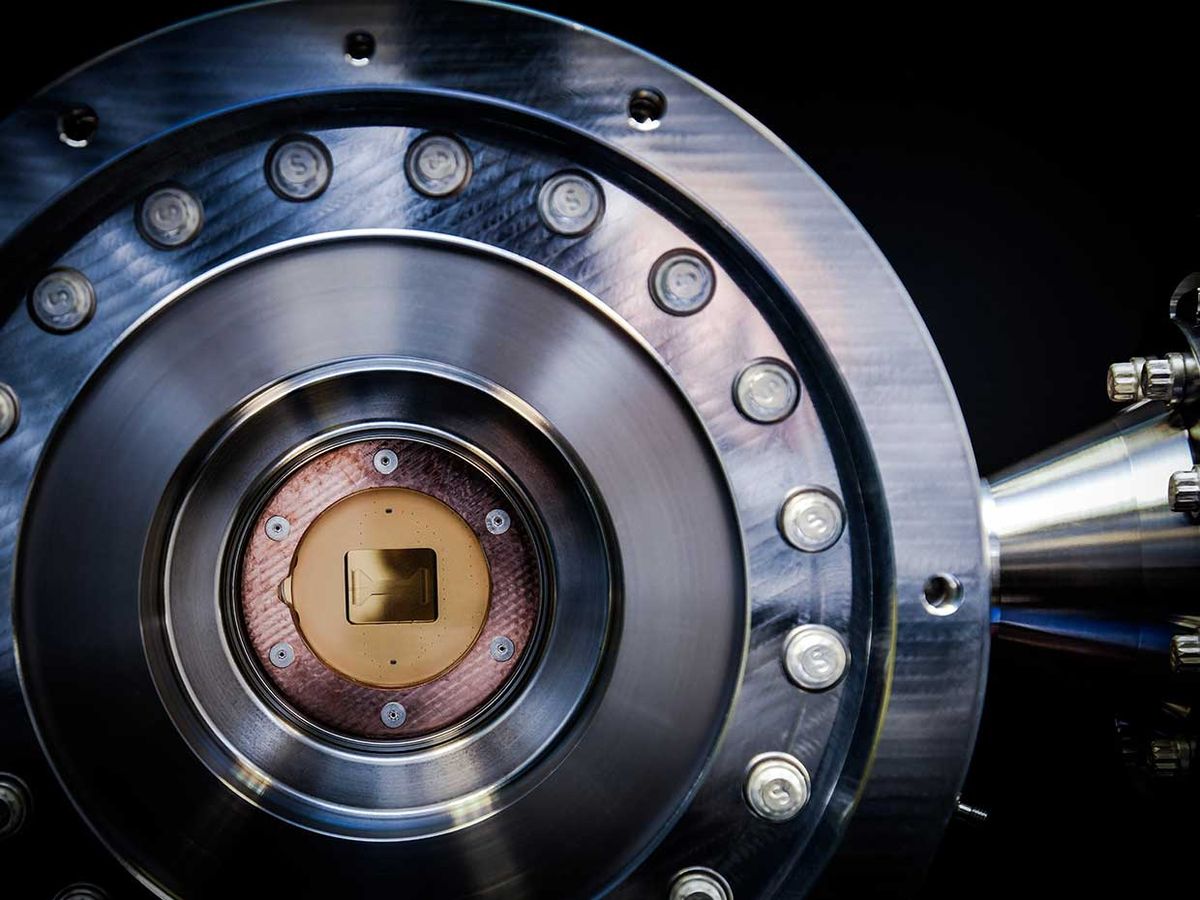Last week, Honeywell’s Quantum Solutions division released its first commercial quantum computer: a system based on trapped ions comprising 10 qubits. The H1, as it’s called, is actually the same ion trap chip the company debuted as a prototype, but with four additional ions. The company revealed a roadmap that it says will rapidly lead to much more powerful quantum computers. Separately, a competitor in ion-trap quantum computing, Maryland-based startup IonQ, unveiled a 32-qubit ion computer last month.
Ion trap quantum computers are made of chips that are designed to trap and hold ions in a line using a specially-designed RF electromagnetic field. The chip can also move specific ions along the line using an electric field. Lasers then encode the ions’ quantum states to perform calculations. Proponents say trapped-ion-based quantum computers are attractive because the qubits are thought to be longer-lasting, have much higher-fidelity, and are potentially easier to connect together than other options, allowing for more reliable computation.
For Honeywell, that means a system that is the only one capable of performing a “mid-circuit measurement” (a kind of quantum equivalent of an if/then), and then recycling the measured qubit back into the computation, says Patty Lee, Honeywell Quantum Solutions chief scientist. The distinction allows for different kinds of quantum algorithms and an ability to perform more complex calculations with fewer ions.
Both companies measure their systems’ abilities using a value called quantum volume. Daniel Lidar, director of the Center for Quantum Information Science and Technology at the University of Southern California in Los Angeles explained quantum volume to IEEE Spectrum like this:
…. IBM’s team defines quantum volume as 2 to the power of the size of the largest circuit with equal width and depth that can pass a certain reliability test involving random two-qubit gates. The circuit’s size is defined by either width based on the number of qubits or depth based on the number of gates, given that width and depth are equal in this case.
That means a 6-qubit quantum computing system would have a quantum volume of 2 to the power of 6, or 64—but only if the qubits are relatively free of noise and the potential errors that can accompany such noise.
Honeywell says its 10-qubit system has a measured quantum volume of 128, the highest in the industry. IonQ’s earlier 11-qubit prototype had a measured quantum volume of 32. It’s 32-ion system could theoretically reach higher than 4 million, the company claims, but this hasn’t been proven yet.
With the launch of its commercial system, Honeywell unveiled that it will use a subscription model for access to its computers. Customers would pay for time and engagement with the systems, even as the systems scale up throughout the year. “Imagine if you have Netflix, and next week it’s twice as good, and 3 months from now it’s 1000 times as good,” says Tony Uttley, president of Honeywell Quantum Solutions. “That’d be a pretty cool subscription. And that’s the approach we’ve taken with this.”
Honeywell’s path forward involves first adding more ions to the H1, which has capacity for 40. “We built a large auditorium,” Uttley says. “Now we’re just filling seats.”
The next step is to change the ion trap chip’s single line to a racetrack configuration. This system, called H2, is already in testing; it allows faster ion computation interactions, because ions at the ends of the line can be moved around to interact with each other. A further scale-up, H3, will come with a chip that has a grid of traps instead of a single line. For this, ions will have to be steered around corners, something Uttley says the company can already do.
For H4, the grid will be integrated with on-chip photonics. Today the laser beams that encode quantum states onto the ions are sent in from outside the vacuum chamber that houses the trap, and that configuration limits the number of points on the chip where computation can happen. An integrated photonics system, which has been designed and tested, would increase the available computation points. In a final step, targeted for 2030, tiles of H4 chips will be stitched together to form a massive integrated system.
For its part, IonQ CEO Peter Chapman told Ars Technica that the company plans to double the number of qubits in its systems every eight months for the next few years. Instead of physically moving ions to get them to interact, IonQ’s system uses carefully crafted pairs of laser pulses on a stationary line of ions.
Despite the progress so far, these systems can’t yet do anything that can’t be done already on a classical computer system. So why are customers buying in now? “With this roadmap we’re showing that we are going to very quickly cross a boundary where there is no way you can fact check” a result, says Uttley. Companies need to see that their quantum algorithms work on these systems now, so that when they reach a capability beyond today’s supercomputers, they can still trust the result, he says.
Samuel K. Moore is the senior editor at IEEE Spectrum in charge of semiconductors coverage. An IEEE member, he has a bachelor's degree in biomedical engineering from Brown University and a master's degree in journalism from New York University.




